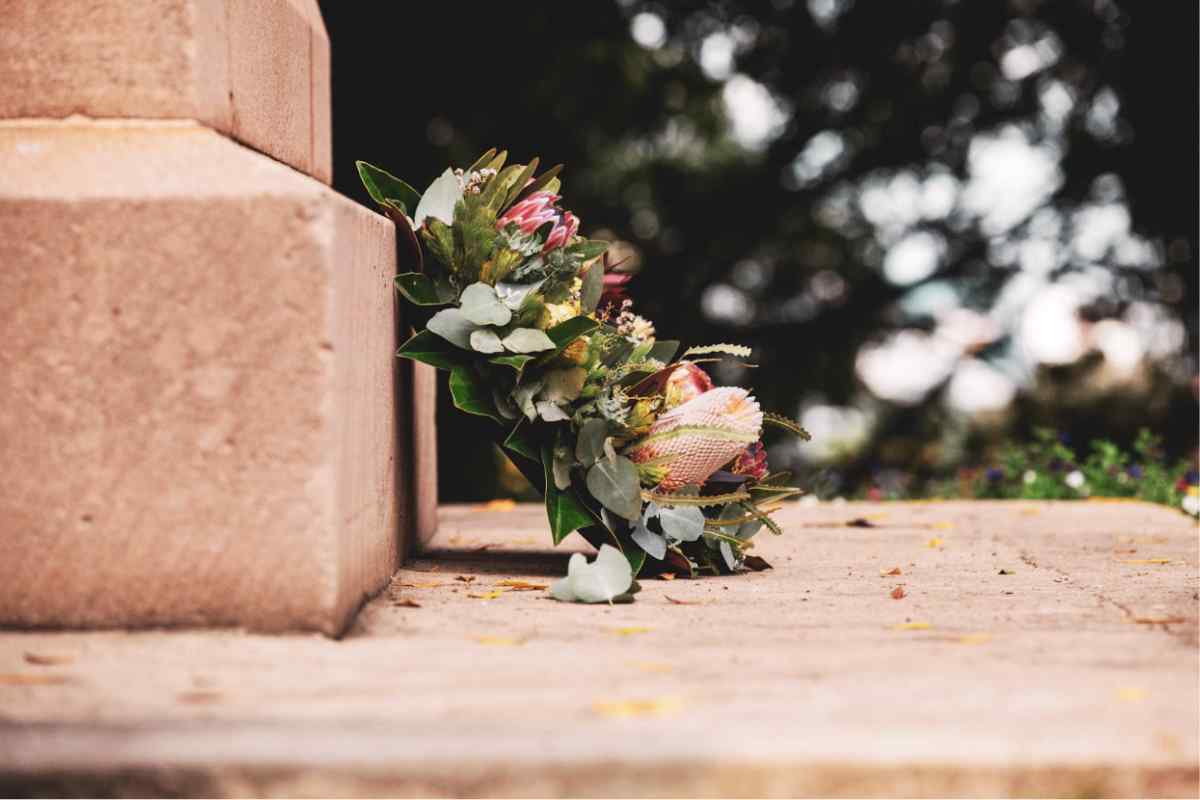Honoring Your Loved Ones: A Guide to Family Memorials and Legacy Building
Memorials for loved ones offer reflection and solace, capturing their essence to inspire and connect us, just as they did in life.

The loss of a beloved family member leaves a permanent void. Yet memorialization presents opportunities for reflection, consolation, and discovering deeper connections with those who have passed on. Thoughtfully designed memorials invoke the essence of someone at their best so their glow may continue to kindle human hearts and minds. These sacred spaces inspire us in death just as compellingly as our ancestors did in life.
An impactful family memorial both honors individual memories and strengthens generational bonds. Within these epicenters of shared remembrance, descendants reinforce their common foundation upholding family identity and heritage. Lives devoted to noble purposes seed future fruits nourishing branches that remain. The most meaningful tributes invite inheritors to savor and carry forth the rich legacies filtering down to them.
Understanding the Different Types of Memorials
There are several options for memorializing a loved one depending on your preferences and cemetery guidelines. The three main types of memorials are:
Monuments
Monuments are stone markers placed over a grave, usually 3-4 feet tall for a standing monument or flat for a ground-level marker. Granite and marble are common materials that allow custom text, images, and symbols of the deceased's life and personality. Monuments memorialize individuals or entire families.
Memorials
Also called grave markers or tombstones, memorials are horizontal stones embedded at the head of a burial plot marking the identity of the deceased and dates of birth/death. Memorials are typically made of granite, with some cemeteries allowing bronze plates or plaques. Inscriptions, images, and symbols commemorating the departed can be added.
Mausoleums
Mausoleums are free-standing stone buildings housing crypts for the entombment of caskets or cremation urns. They protect remains with an enclosed, weather-proof structure built to last for generations. Mausoleums can be private or public, holding one or multiple deceased. Private family mausoleums have restricted access for descendants and relatives to visit.
Choosing the Right Memorial
Several factors impact choosing the best memorial option:
Budget
Larger monuments and private mausoleums can be more expensive, while basic plaques and public crypts help control costs. Setting a memorial budget first allows for weighing affordable options.
Family Preferences
Consider religious beliefs, burial or cremation preferences, and family heritage passing down memorial sites through generations. These traditions steer the type of memorial selected.
Cemetery Regulations
Cemeteries have guidelines around approved materials, sizes, inscription content, and installation requirements that dictate compatible memorials.
Maintenance
Monuments require occasional cleaning/inspection while mausoleums need structural care. Perpetual maintenance funds can be established to cover future upkeep.
Creating a Lasting Legacy
Memorials represent one way to honor those we lost for generations to come. Additional impactful legacy-building ideas include:
Compile a Family History
Recording your loved one’s story preserves their memory while doubling as a treasure for descendants. Include photos, videos, text, and voice memoirs as a living archive.
Plant a Memorial Tree
Trees planted in your loved one’s honor give family/friends a living place to reflect and find peace. Some providers offer memorial trees with plaques.
Establish a Scholarship Fund
Keep their passion alive by funding academic scholarships in subjects your loved one cares about. Support future generations while associating their memory with helping others achieve dreams.
Donate to a Cause They Cared About
Honor their values and life’s work by giving to a charity or cause your loved one was passionate about. Memorial donations also bring help and hope to those in need.
Create a Foundation
Establishing a non-profit foundation sustains charitable efforts over time. Foundations preserve legacies by uniting families around shared values and funding impactful initiatives in the name of those honored.
Dedicate a Community Space
Municipal plazas, public gardens, and recreation spaces like parks offer naming dedication opportunities. Community spaces linked to your loved ones become celebratory gathering spots keeping their spirit alive.
The Significance of Family Mausoleums
While headstones have sufficed for prior generations, many modern families opt for family mausoleums ensuring permanency, security, and customization. Key merits include:
Family Legacy
Mausoleums prominently display family history for descendants to connect with ancestors. Crypts house generations together who now share sacred ground.
Security and Peace of Mind
With remains enclosed in weather-proof sanctuaries, you safeguard loved ones’ physical well-being much like they protected your family. Theft/vandalism risks are also non-issues.
Customization
Unlike cemetery rules limiting plaques, mausoleums allow completely personalized designs from motif sculptures to favorite songs etched into the walls. You craft spaces as distinct as your family story itself.
Visibility
Prominently sited above ground, mausoleums grab attention versus in-ground graves families can easily overlook or struggle to locate over time.
Expandability
Mausoleums offer continuous room to add future generations through architectural expansion plans. Memorializing relatives for decades/centuries is possible by accounting for long-term growth.
Two other relevant considerations are personalization and contract terms during the mausoleum construction process:
Personalization
Opting for providers allowing fully customized spaces reflecting family legacy and brand ensures meaningful results versus cookie-cutter designs.
Construction Contracts
Clearly, spelled-out contracts listing realistic delivery timelines, staged payment schedules, specific materials, and final approval processes give confidence in aligning expectations.
Considering a Family Mausoleum
Constructing a family mausoleum takes careful evaluation across areas like:
Location
Consider aspects from cemetery traffic levels ensuring frequent family visits, backdrop vistas for an inspiring final resting view, and optimal sunlight exposure.
Size and Design
Crypt capacity for now and future growth determines dimensions while style aligns with family heritage whether classic elegance or modern minimalist architectural preferences.
Materials and Construction
Durable, weather-resistant building materials like granite must be sourced from reputable quarries. Craftsmanship standards ensure structural integrity through intricate construction techniques perfected over decades.
Maintenance Funds
Establish funds to cover eventual costs of crypt seal replacements, cleaning, inspecting, and repairing any structural wear from weathering. Reputable providers offer perpetual maintenance packages passed down to future generations.
Selection Processes
Look for transparent provider selection processes detailing stages from initial design conceptualization through final installation. Competent partners eagerly guide families through each phase.
Warranties
Opt for extensive warranties guaranteeing quality materials and flawless workmanship on family mausoleums for added peace of mind given considerable financial investments.
Working with a Reputable Memorial Provider
Selecting the right partner ultimately determines memorialization success. Key attributes to seek include:
Proven Experience
Decades of designing family monuments and mausoleums proven capabilities in handling extensive projects requiring structural engineering mastery, stonework excellence, and design innovation.
Design Expertise
Memorial artisans translate family heritage into compelling conceptual designs before project inception through initial sketches and eventual 3D renderings ensuring satisfaction.
Craftsmanship and Materials
Established supply chain partnerships with leading quarries around the world enable matching optimal granite grades and colors to unique needs befitting family legacy.
Installation and Support
Turnkey offerings from excavating cemetery plots to final monument assembly provide unified infrastructures while perpetual maintenance packages care for memorials long term.
For tailored family mausoleums exemplifying these pillars, some of America’s most discerning families have partnered with expert craftsmen who can create a custom walk in family mausoleum. Their extensive experience has led to proudly dotting iconic memorial architectures across the national landscape while welcoming each family into their own honored space within that legacy.
Conclusion
Memorializing someone who passes furnishes opportunities to celebrate life, share meaningful stories, and craft spaces where descendants strengthen bonds across generations through a shared place honoring those before. Every family has special traditions whether small graveside gatherings or soaring mausoleum spaces reflecting the ascendance into the next life. Memorializing significantly requires pathways resonating peace through the pain of loss.
Stone edifices allow transforming sadness into togetherness for those left behind through places prompting warm remembrance. In the end, the most meaningful memorials reside wherever family still gathers to reminisce fondly on lives well lived. For it is us, the living, who sustain legacies through pursuing equally fulfilling lives that make those we lost proud – the greatest tribute of all.




Comments ()